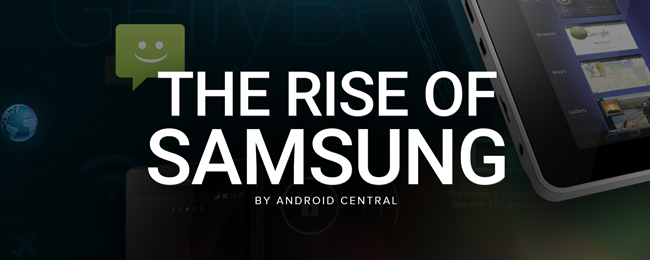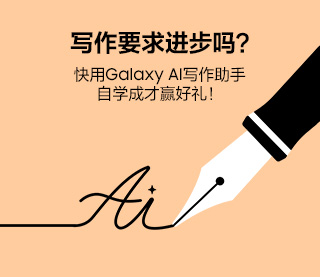
A decisive year in mobile sees Samsung dominating Android and the market, Cyanogen giving rise to custom ROMs, and Jelly Bean taking Android to the next level.
With the arrival of Android 4.0, Google's OS was starting to look like a mature platform. The Ice Cream Sandwich release gave phone and tablet makers a really solid foundation to build atop, and that's exactly what we saw in 2012. In particular, that year was pivotal for Samsung, which used the Galaxy S3 release and an enormous Olympic marketing tie-in to brute-force its way to the top of the Android pile.
In the fifth part of our series on the history of Android, we'll see how Samsung started to become a dominant force in the Android space, doing battle with Apple in the process. And we'll revisit how Google addressed some of Android's longstanding weaknesses through Android 4.1 Jelly Bean and Google Play Services.

2012: A pivotal year for Samsung
Samsung had established itself as a major smartphone vendor with the launch of the Galaxy S2 (in all of its various versions), but 2012 and the launch of the Galaxy S3 marked a turning point for the Korean giant. This was the year it became a smartphone superpower.
“This was the year Samsung became a smartphone superpower.”
While the Galaxy S2 came in various shapes, colors, designs, configurations and names depending on where (and from which carrier) you bought it, Samsung put its foot down with the Galaxy S3, launching the same phone just about everywhere. It marked the transition with a brand new design — one that was "inspired by nature" — with smooth curves, slick colors and a redesigned interface that was soft to match the hardware. Piles upon piles of software features were introduced to fight the minimalistic iPhone it so desperately competed against, particularly in the U.S.
With a single phone to push now, Samsung dialed up its marketing budget to match. It was a worldwide sponsor of the 2012 Summer Olympics in London (strategically only a couple months after the Galaxy S3 was announced), and you couldn't turn on a TV or see a billboard ad in any major city without learning about Samsung and the new Galaxy S. With a clearer message, and a new set of features and specs to push, Samsung's phone sales just kept climbing.

The first next big thing: The Samsung Galaxy S3
With its third major Android flagship ready to launch, Samsung was about to make a play not just for the galaxy, but for the entire mobile universe. And on May 3, 2012, the new center of the Galaxy was the Earls Court Exhibition Centre in Central London, for the unveiling of the Samsung Galaxy S3.
And it wasn't just a new phone we were talking about. Samsung was embracing a new design language after a couple of rounds of colorful, cartoony buttons and icons. Enter the Nature UX.
The GS1 and GS2 were the epitome of the black slab.
Look back on the Galaxy S3, and it makes sense. The GS1 and GS2 — particularly in their unadulterated form — were the epitome of the black slab. Functional as hell, but not much to look at, and certainly not much to feel. The Galaxy S3 from the get-go almost begged you to pick it up. It was shaped like a pebble. (Not to be confused with the Samsung Muse mp3 player, which absolutely did look like a pebble.) And once you did pick it up, you probably couldn't put it down. As soon as you turned it on your were greeted by a sort of still pond on the lock screen, which reacted to your touch with a little splash of water and a bloop sound that was fun the first thousand times. But, hey, nature.
And what's more was that for the first time there was one phone to rule them all. No more mucking around from the U.S. operators.



The London event turned out to be a harbinger of things to come, marking the beginning of what soon would be a Samsung media takeover. The most visible campaign was of course the Summer Olympics in London. While the Olympics is an onslaught of brands peppered with occasional acts of sport, Samsung was impossible to escape. It was everywhere. And that marketing push in conjunction with an excellent device led to the Galaxy S3 becoming one of those phones that refuses to die. Developers still have to support it. Walk down the street and look at the back of folks' phones and you'll see it. Flash. Camera. Speaker.
Samsung was everywhere.
And nobody was more aware of that than Apple. We already were well into the age of the patent lawsuit, with everyone suing pretty much everyone over who had which design or feature first. Apple v. Samsung. HTC v. Apple. Motorola v. Apple. Microsoft v. everybody.
But for Apple, it was personal. First with Android in general — we've all heard the quote of Steve Jobs "willing to go thermonuclear war on this" over Android as a whole. But then there was the matter of Samsung specifically. Design patents went after the look and feel of the phones themselves. (This is where the whole "Apple owns rounded corners" thing came together.) Software patents went after features on the phones themselves. The Galaxy S3 was one of many models targeted.
Samsung was the biggest target, of course, but there were others. And the fight's still ongoing. Apple won at trial, but how much Samsung owes still is up for debate. And ultimately none of this mattered to the consumer. Samsung phones are still available for purchase today. (Including, yes, the Galaxy S3.)


Apple versus Samsung versus Apple
Swipe your phone. Go ahead, stick a finger to the glass, and swipe. Now swipe some more. Keep swiping. Spread your fingers to zoom out. Now pinch to zoom in. Or swipe to unlock.
None of those gestures is your own. Somewhere, someone once patented those maneuvers. At least they did in the context of moving a finger across the touch-sensitive display on a hand-held device, the method comprising:

"Detecting a contact with the touch-sensitive display at a first predefined location corresponding to an unlock image; continuously moving the unlock image on the touch-sensitive display in accordance with movement of the contact while continuous contact with the touch screen is maintained, wherein the unlock image is a graphical, interactive user-interface object with which a user interacts in order to unlock the device; and unlocking the hand-held electronic device if the moving the unlock image on the touch-sensitive display results in movement of the unlock image from the first predefined location to a predefined unlock region on the touch-sensitive display."
Yes, that's a thing. To be specific, it's a patent awarded to Apple in 2011 for slide-to-unlock. The infamous "721" patent was one of a number of patented software features Samsung was found to have willfully infringed as part of a years-long (and still going!) series of back-and-forth lawsuits between two of the world's biggest smartphone manufacturers.
Purposefully infringing on a someone else's IP is a dark side of doing business, too. "Great artists steal" and all that.
Companies suing each other isn't exactly a new phenomenon, and protecting intellectual property is an important part of any business. Conversely, purposefully infringing on a someone else's IP is a dark side of doing business, too. "Great artists steal" and all that.
And in late 2011 and well into 2012 and then some, tech companies suing each other over various hardware and software patents seemed to dominate the headlines every day. Maybe it was swipe to unlock. Maybe it was one phone looking a little too much (or a lot too much) like someone else's phone. Lawsuits were filed. Injunctions were filed. Occasionally, phones were banned from being sold in certain countries while the lawyers figured it all out.
And Samsung and Apple were two of the biggest players in what seemed like a high-stakes game of mutually assured destruction. And for Apple, it was personal.
Android was a "stolen product," as far as the late Steve Jobs was concerned. And that wasn't even counting the influence that the iPhone itself clearly had on handset design. And so the lawsuits began. The super-short, don't-have-a-law-degree version is Apple sued Samsung over a number of software patents (think slide-to-unlock) and hardware patents (think overall design, including rounded corners). This happened in a number of countries throughout the world. Apple tried to get a U.S. judge to ban Samsung from selling its phones while this was all being sorted. When that didn't happen, Samsung kept on selling millions of phones. A U.S. jury ultimately ruled that Samsung willfully violated some patents, and that it didn't on others. (Other patents, still, were ruled invalid in the first place — which brings about the argument that software patents are silly in the first place.) Samsung was ordered to pay some $119 million of the $2.2 billion Apple was seeking — and it's still appealing that amount today.

The battle also played out in marketing — at least if you were Samsung. Starting with the Galaxy S3, Samsung aggressively targeted Apple's iPhone in ads on TV, the web, print, and even billboards. Practically every Galaxy S3 ad compared the phone to the iPhone, quite often with a mocking tone towards iPhone owners and Apple's own superlative marketing (especially those that would wait in line for the latest Apple device). It was hard to turn anywhere without seeing Samsung ads deriding the iPhone. Apple, for their part, largely ignored Samsung's media mockery.
Samsung was ordered to pay some $119 million of the $2.2 billion Apple was seeking — and it's still appealing that amount today.
This didn't happen overnight. We're talking a good four or so years. In the meantime Samsung (and others) changed various aspects of their design. A new guard came into power at Apple. (And at Samsung, for that matter.) And in 2014 both sides settled all their non-U.S. cases.
So what did any of this mean to your average consumer? Not a lot, beyond the fanboy arguments and the occasional nightly headline. But behind the scenes it led to minor redesigns in hardware and software — which might well have occurred naturally. We'll never know.
Today, both companies continue to enjoy life as the top smartphone manufacturers in the world. And presumably their lawyers are still doing just fine, too.









